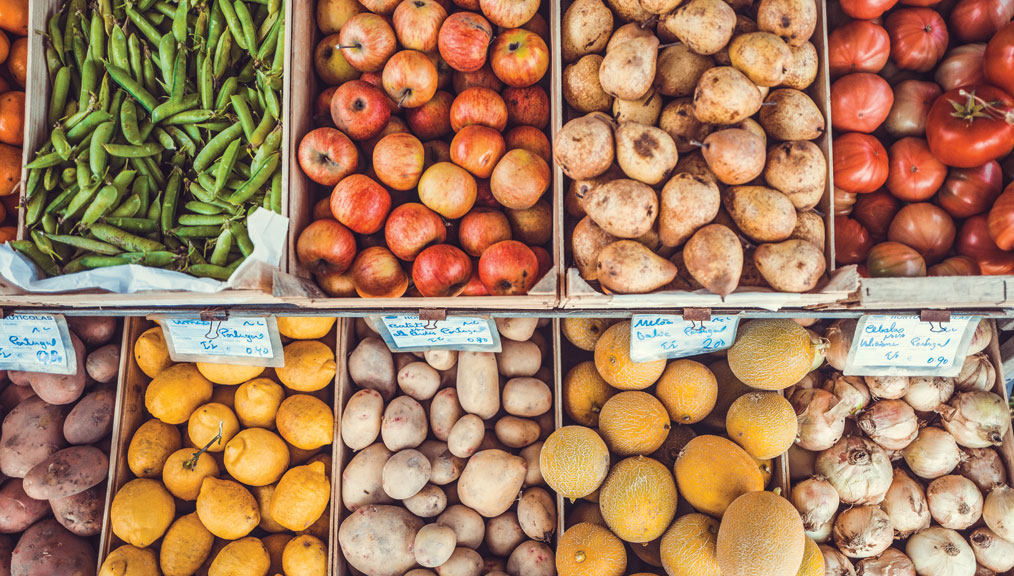(Photo: Lukas Budimaier.)
[A] lack of food security is one of the most pernicious problems facing farmers across coffee-growing countries. At some point during the year, the families of coffee farmers won’t have enough food to meet their dietary needs. This isn’t a problem faced by a few families here and there. It’s a feature of coffee growing, something so common that in Central America it has the name los meses flacos. That means the thin months.
Back in 2014, the SCAA’s sustainability council issued a whitepaper on food security. They included a summary of studies on the problem in Central America and the Dominican Republic. Throughout the study regions, more than 60 percent of households surveyed said they experienced food insecurity during the year. Of the six studies, four reported the rate as above 80 percent, including one survey of 256 families in northern Nicaragua in which eight in ten families went hungry.
(In the report, the SCAA takes pains to point out that Central America is probably not where food insecurity is harshest—coffee-growers in Africa and Asia likely have it worse—but that’s where the studies have been done.)
One person in the industry fighting this is Marcela Pino, the co-director of the coffee NGO Food 4 Farmers, a group whose sole mission is to work with coffee communities in Colombia and several Central American countries to develop long-term programs to limit food insecurity. She says that when a child is subjected to chronic seasonal hunger, he’ll suffer from stunted growth and learning difficulties that will follow him into adulthood. To compensate for a lack of healthy food, it’s common for families to rely on cheap, calorie-dense foods—basically, junk foods—that don’t provide rounded nutrition and lead to high rates of obesity, especially among children and women.
There’s a host of economic and political reasons why food security is so hard to come by (poverty in impoverished countries is always multifaceted and deep-rooted), but smallholder farmers who raise a single crop, which is common among coffee growers, have one drastic, exacerbating factor: they get paid once a year. A farmer works her fields at varying intensities throughout the year, but it’s only on the few, clumped-together days when she delivers the crop that she gets paid.
That money must last until her next delivery, a year later. Imagine the budgeting challenge of this. One lump of cash, no refills, to cover a year of life and its uncertainties. You know that, at best, things will be tight.
A farmer works her fields at varying intensities throughout the year, but it’s only on the few, clumped-together days when she delivers the crop that she gets paid.
Over that period, she must buy fertilizers, replace equipment, hire laborers, and spend cash on anything else the farm needs so she can grow and deliver the next crop. When these costs outstrip the budget, they often take precedence because without them next year’s crop might fail and a couple days (or weeks, or months) with too little to eat seems like a small problem by comparison.
Pino says stretching the budget is getting harder and harder because year after year the costs of food, agricultural supplies, and labor have increased, but coffee prices haven’t. Compared to other cash crops, Pino says, “They know that coffee can make great money, so they keep it.” (I put the emphasis on can. The contrary is that commodity prices can freefall right as they bring their crop to market, but that is true of other commodity crops.)
When asked what solutions there are to end food insecurity at origin, Pino points to national and global economic and political obstacles. (The SCAA’s whitepaper reminds us the problem isn’t a lack of food—the world grows more than enough food to provide a solid diet for everyone—it’s a problem of the mechanisms and incentives to get food where it’s needed.) “It’s just a symptom of a systemic problem,” Pino says.
Mitigation, then, is Food 4 Farmers’ goal. How they help a community depends on what the community wants. Most often, coffee communities want to grow more crops either to sell or eat. Diversification offers economic protection when one crop has a bad price, and it improves farm and environmental health. Food 4 Farmers has had success with this model, with farmers growing crops like bananas and avocados to sell and fresh and dry-storage crops to eat.
There are limits, though. To be profitable, many cash crops require farms much bigger than smallholders own (that’s what makes coffee so attractive). Growing garden vegetables is the solution non-farmers typically offer, but Pino points out one downside of garden vegetables: “If they don’t grow a cash crop, how do they pay for their kid’s school uniform?”
I’d make an even harsher point: subsistence farmers are among the poorest and least food secure. If a drought or storm wipes out your crop, you starve. Growing your own food can only be a stopgap.
Another source of income Food 4 Farmers has developed with its partner communities is honey. The symbiosis of pollinators and farmers is powerful, and the product of the bees’ hard work is both highly nutritious for the farm family and as a cash source.
Pino says that most communities know what they can do to alleviate their food security problems, but lack either the knowhow or the money to undertake these projects. That’s where we on the other side of the supply can help by supporting the groups fighting for food security at origin.
The SCAA’s whitepaper points to Food 4 Farmers, Save the Children, Catholic Relief Services, Heifer International, Mercy Corps, CII-ASDENIC, the Community Agroecology Network, Pueblo a Pueblo, and the Coffee Trust as just some of the organizations taking on food security at origin.
—Cory Eldridge is Fresh Cup‘s editor.















